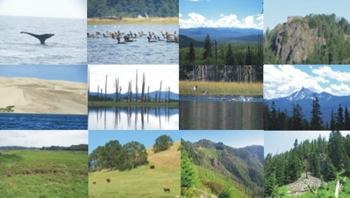Join the Conversation! Would you like to talk with others about birds and birding in our area? Sign up for the Umpqua Birds email list. We share information on birds in the Umpqua River Basin and/or Douglas County, Oregon. We report birds we have observed, share good places to go birding, ask questions about identification and habitat, share photos, etc. For more information and a link to archives, click here.
Seasonal Occurrence Charts Use the links below--or click on the region of interest on the map to the right--to download a handout illustrating the timing and abundance of the most regular birds in that region. We have two-page handouts for the
Central Umpqua Valleys
,
High Cascades.
and
Coastal regions of Douglas County.
Similar handouts for the Coast Range and West Cascades may be developed later as well. The two-page handouts can be printed back-to-back (two-sided) to make one handy sheet. Keep copies in your bird book, on your table where you watch your feeder, in your car, and pass them on to friends!
Log of version changes to charts.
|
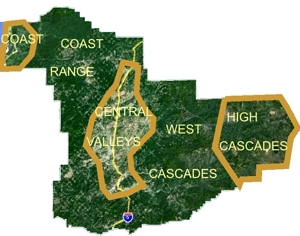
| The following citations are linked to pdf versions of these articles:
Sawyer, Martha, and Matthew Hunter. 1988. Checklist: Douglas County Coast. Oregon Birds 14(1):93-106.
Fix, David, and Martha Sawyer. 1991. Checklist: the Douglas County Western Cascades. Oregon Birds 17(1):3-12.
Hunter, Matthew, Martha Sawyer, Ron Maertz, Brian Kruse, and Katherine Wilson. 1998. Birds of Douglas County, Part 3, The Hundred Valleys of the Umpqua. Oregon Birds 24(4):103-117.
| Birding LocationsThe Birding Oregon website has online information on birding locations in Douglas County.
A brochure of birding locations may be obtained from Umpqua Valley Audubon Society while attending one of their programs. The brochures are also available at US Forest Service and Bureau of Land Management offices and Visitor Centers in our area.
You may explore where people have been seeing birds and what they have been seeing at eBird for Douglas County. Be sure to check out the Hotspots and Recent Visits tabs there.
BirdTrax (the box to the right) is a Google Gadget that can be customized to display specific records from eBird and inserted into any website. This particular BirdTrax is set to display bird sightings for Douglas County, Oregon. Click on the headings and symbols and explore what you can learn from this gadget! To access much more eBird data for Douglas County, click here.
Over time we will develop guides to Douglas County birding sites here on this website. Stay tuned!
Check out the Umpqua Valley Audubon Society website for upcoming field trips--a great way to get introduced to local birding sites as well as other birders.
You may ask about good places to go birding or where to find particular species on the Umpqua Birds email list.
|
|
Backyard Birds of Douglas County
Click here to see photos and short descriptions of the 60+ most common birds in backyards (or any yards) in the lowlands of Douglas County. If you are new to birds in Douglas County, this may help you get familiar with the most regular species near your home. If you are somewhat familiar with the birds near your home, you may still learn a thing or two about these avian creatures with whom you share habitat in the Umpqua Basin. Birds are sorted by their predominant season of occurrence and whether they normally occur at feeders or not. Click here to learn about the most common backyard birds in Douglas County.
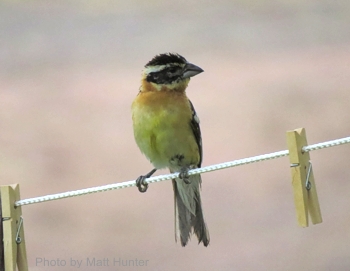
|
Hummingbirds in Douglas CountyIn our area we have two regularly occurring species: Rufous Hummingbird and Anna's Hummingbird. The Rufous Hummingbird typically arrives here in mid- to late February, usually males first, and is present through September most years. Numbers fluctuate during the season depending on location, weather, and nesting success. Anna's Hummingbirds have only been in our area since the mid-1900s, but have become one of the most familiar hummingbirds at feeders in the lowlands of Douglas County as they are here year round. Feeding tips: plant flowers, don't use red dye in your sugar mixture, platform feeders are generally best. For more information, see the Feeding Hummingbirds page at Cornell Lab of Ornithology. To be a "citizen scientist" for hummingbirds, check out Audubon's Hummingbirds at Home effort. To learn more about the hummingbirds we have here in Douglas County, click here.
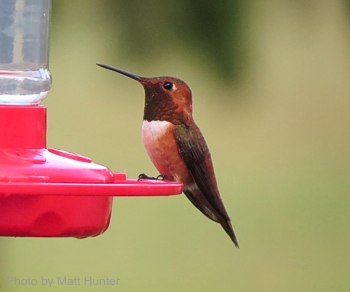
| Tips for Beginning Birders
If you have developed an interest in birds and/or birding and want to learn more, there are many opportunities available. You can develop your interest at the pace and in the way that interests you. There is no "one way" to do birding. Peoples' interests in birding stem from many different motivations and desires. Enjoy all aspects that suit you. What we present here are some elementary tips that can enhance the richness of your journey. Not all of these may be a fit for you; choose what you like: (1) If you have not already, obtain binoculars and a spotting scope with tripod to bring the birds in to closer view. (2) Most importantly, spend time enjoying birds: observing, watching, listening, learning. (3) Acquire a good bird identification book relevant for our area, or try the Merlin Bird ID App for beginners. (4) If you enjoy learning from or with others, find someone with whom you can pursue your interests. (5) Venture out from your home to nearby parks, ponds, woods, and pastures to discover the different species associated with these different habitats. (6) Thoroughly explore this website! :-) Lastly, see #2 again, and again, and again.... For an expanded discussion of these topics click here.
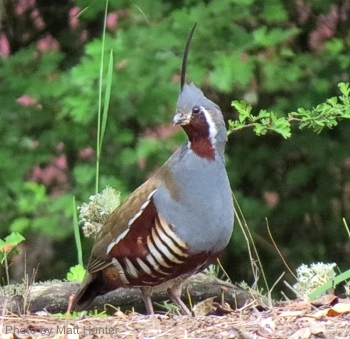
| |
| Use eBird to report and keep track of the birds you see! eBird is an online spatial database of bird sightings. You can input records of birds you see at your home feeder each day, or enter field notes from an outing to a local birding spot. You can also query your own sightings or what others have seen at particular locations and times of year, in your local area or around the globe! To learn more about using eBird, see eBird.org
| 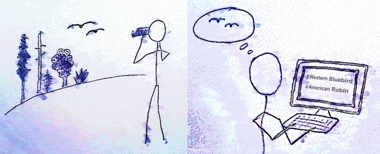
| eBird App There's an app for your mobile device (phone, tablet, pad) that allows you to record bird observations right in the field, and then with a touch of a button, submit the information directly to eBird! This enables you to record your field observations once and submit directly to eBird, rather than having to re-enter them into the computer or later trying to remember what you saw and how many. To learn more, click here.
|
| Umpqua Birds Email Discussion List
Share your observations with friends and neighbors on
Umpqua Birds, a local email list where people share about birds and birding in Douglas County. When you share what you have
been seeing at your feeders or local birding spots, we all get to share in
your experience and by virtue of these vicarious experiences we all gain
more "experience" with birds in our area through others' experiences. It's
kind of like "pot-luck" birding, where everyone brings a little something
and we all enjoy the richness and variety and new recipes. Everyone has
different birds, experiences, and observations at there "patch" and when
everyone shares, we all get a feast!
Report Marked/Tagged/Banded Birds
CLICK HERE to report your marked or banded bird!
This link takes you to the Patuxent Wildlife Research Center Bird Banding Laboratory website. On this web page there is a link "Report a Bird Band or a Marked Bird," as well as links to lots of information on bird banding.
When you report a banded, collared, or marked bird, not only do you do a service to the people studying these birds, the Bird Banding Lab will send you information about the bird you observed, such as where and when the bird was banded, and if known, the age, sex, and perhaps other info.
To learn about birds banded or observed here in Douglas County, Oregon, click here.
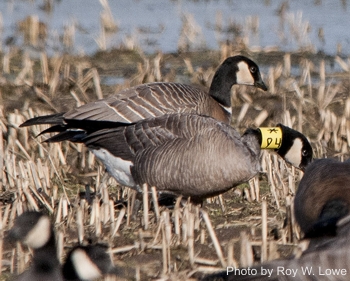
| Report an Injured Bird or Animal to Umpqua Wildlife Rescue: 541-440-6895
Not an emergency? Click here to see their website!
|
| Would you like to contribute to the knowledge of birds in your region or the world? eBird is the simplest and most convenient way to do that on your own, wherever and whenever you like, but the following events are organized to focus effort on a specific location, time period, or both. Some of these are done on your own, while others can be fun group activities. There are one or more of each of these counts or routes in the Umpqua Basin. Explore and see if you find one or more that suit you!
Oregon 2020
[Note: This project is completed.] Want to contribute to a benchmark survey of Oregon's birds right here in Douglas County? Become a Douglas County Explorer for the Oregon 2020 Project. This project, publicly launched in 2014 is employing a combination of citizen science participation and scientifically/systematically collected bird data from all over the state of Oregon. Their goal is that by the year 2020, we will have amassed sufficient data on Oregon's birds from all over the state that a thorough picture of the status and distribution of most species will be possible for this snapshot in history. The best way for citizen scientists (i.e. birders) to contribute, is to register and begin visiting the Oregon 2020 Hotspot Squares. You can fill out forms and send them to the Oregon 2020 crew to enter, or you can save them some time and money and input the data yourself directly into eBird. To find out more, click here.
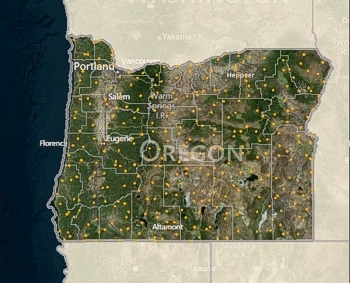
| Great Backyard Bird Count (GBBC)
This nationwide count is geared toward
backyard, feeder birders, but you can count any area you want during the 4-day
period, mid-February each year. It's kind of like a Christmas Bird Count (see below), but it doesn't
need to be coordinated locally (everyone can count when/where they want),
and it goes for several days. Cornell University's GBBC website has
information on how to participate and links to let you explore data and
bird distribution maps from previous years, etc. Not surprisingly, it uses
eBird as its vehicle for data input and analysis.
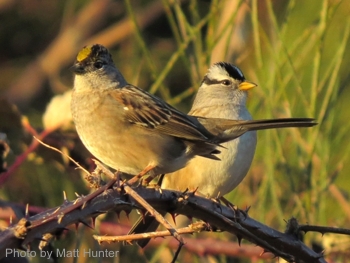
| Christmas Bird Count (CBC)
These are local one-day counts in early winter, coordinated
nationwide by the National Audubon Society, and organized locally by a
"compiler." The count occurs on a specific day chosen between
mid-December to early January. A number teams are formed and each team counts all birds in a specific sector within the 15-mile diameter circle. Often times a "count down" is done at the end of the day at a restaurant or home with some good warm food, drink, and good stories. The CBC is one of, if not thee, longest-running
organized bird count in the world (started in 1900), though most local
counts are "younger" than that. The Roseburg-Sutherlin CBC has been run consistently
since December 1974. To learn more about CBCs, see the National Audubon Society's CBC website. To learn more about CBCs in Douglas County, click here!
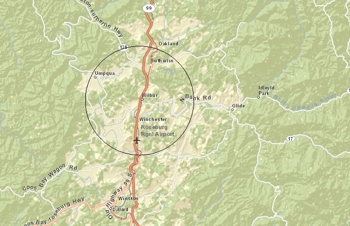
| North American Migration Count (NAMC)
[Note: this project has ended.] These counts
are in some ways like the Christmas Bird Count in that they are one-day
events, but they occur during peak spring and fall migrations rather than winter and in Oregon they are organized and compiled by county. The compiler simply attempts to make sure participants are spread out so that areas (and birds) are not double-counted.
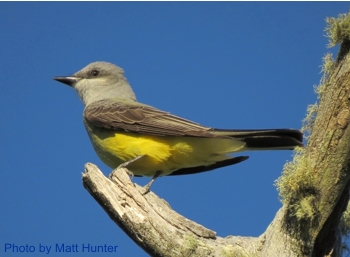
| Breeding Bird Surveys (BBS)
These breeding season surveys have been conducted
in Oregon (and across the country) for many decades. They are 25-mile
routes with dedicated 3-minute survey stops every half-mile (total of 50
stops). They are run once per year during a breeding season window, which
is sometime in May through July depending on location. A familiarity with songs and calls of local birds
is necessary for this particular survey. But if you don't have those
skills, you can tag along with someone who does and learn a lot! To find
out more, see the Patuxent Wildlife Research Center BBS website.
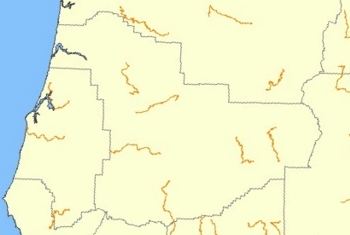
| Swift Watch
Each spring and fall, hundreds and sometimes thousands of Vaux's Swifts enter the Clay Place chimney behind the Umpqua Valley Arts Center on Harvard Avenue in Roseburg at dusk to roost. Umpqua Valley Audubon Society (UVAS) often hosts an educational Swift Watch event there once or twice a week in spring and fall, which typically includes art activities for kids provided by the Umpqua Valley Arts Association. UVAS seeks volunteers to count swifts during these events--see the UVAS website for more information. However, many of the other days do not get counted. If you are so inclined, you can increase the amount of Vaux's Swift data collected at this site by counting the swifts at dusk and submitting the data with this online data form. For more information on this effort to collect migration data on Vaux's Swift, see the Vaux's Happening website. To see an astonishing slow-motion video by Bob and Jeannie Pollock of swifts entering the top of the chimney click here!
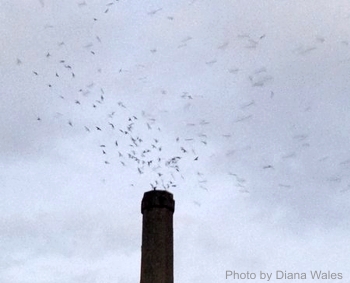
| Hummingbirds at Home
Hummingbirds are one of the most fascinating, endearing, and watchable birds we have in our area. The Audubon Society has developed a citizen scientist program specifically for learning more about hummingbirds in North America. You may contribute individual sightings of hummingbirds; short surveys for hummingbirds at specific locations such as your feeder, yard, garden; and flower-blooming observations. Audubon has developed excellent computer-based and mobile apps to help you do short surveys and enter your observation data online. To learn more, see Audubon's Hummingbirds at Home website.
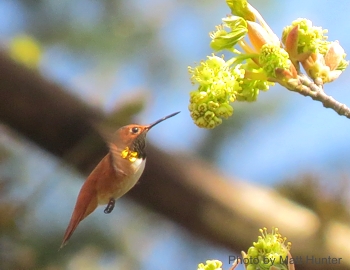
| Nightjar Survey Network (NSN)
Nightjars (also known as goatsuckers) are an intriguing group of crepuscular and nocturnal species with cryptic owl-like plumage. Comparatively little is known about these species, and this survey effort coordinated across North America by the Center for Conservation Biology attempts to learn more about their distribution and habits. Regular species in our area are the Common Nighthawk and Common Poorwill. The nighttime surveys consist of ten stops each spaced about a mile apart, during specific weather and moon conditions. Surveyers listen for nightjars for six minutes at each stop and record results. To find out more or participate in nightjar surveys in our area, see the Nightjar Survey Network website.
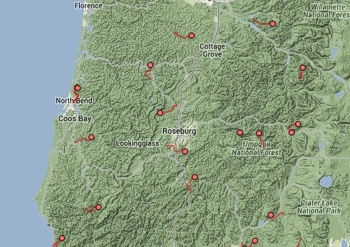
| Winter Raptor Surveys (WRS)
These were begun in the early 2000s by the East
Cascades Bird Conservancy (now East Cascades Audubon Society). Routes are
on the order of 50 to 90 miles long, and run once per month from December to
March. They are essentially driving routes in which you stop only if you
need to identify a raptor, or to look around in good locations. These are
also fun to do with a friend, and a good way to learn more about habits and
identification of raptors. To learn more, see the East Cascades Audubon Society WRS website.
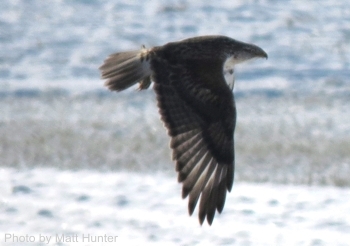
|
| For now, this is just a placemark for a resource I envision that will archive or link to digital media on birds in the Umpqua Basin. For now, I just offer:
All eBird data, photos, and recordings from Douglas County, Oregon
All iNaturalist bird data, photos, and recordings from Douglas County, Oregon
Elva Paulson's Field Sketches from Douglas County, Oregon
Elva Paulson's Field Notes blog includes some photos and sketches from Douglas County, Oregon
Paul Meyer's Photo Albums (many birds from Douglas County)
Francis Eatherington's Bird Photos (many but not all birds from Douglas County)
Francis Eatherington's chronological photos of a Rufous Hummingbird nest on her front porch.
Francis Eatherington's Youtube channel with interesting video of local birds and other wildlife
Jimmy Billstine's Blog includes many stories and photos
Matt Hunter's older photo albums from Douglas County (with a few others' photos and videos included and acknowledged)
Matt Hunter's blog on bird and naturalist stuff in Douglas County
Enjoy!
If you have photos, videos, or sound recordings from the Umpqua Basin you would like to contribute or that I could link to, or if you would like to take on this project yourself, please contact me! Thanks!
|
| Below are primary links to resources for learning more about birds and birding in Oregon and North America.
Oregon Audubon Chapters: A list of Audubon chapters in Oregon.
Oregon Birding Association: Our state birding organization, formerly Oregon Field Ornithologists.
Oregon Birders On Line: Our statewide bird discussion list.
Birding Oregon: Birding locations and bird lists for every county in Oregon.
American Birding Association: A nationwide birding organization.
Cornell Lab of Ornithology: A mountain of resources for anyone intersted in birds.
Earbirding: A multitude of resources and links for someone interested in bird sounds.
Ebird: A field notes database for birding locations worldwide.
Avian Knowledge Northwest: Distribution models and data on birds in the Pacific Northwest.
Slater Museum of Natural History Wing and Tail Image Collection: Searchable images of bird wings and tails.
USFWS Forensics Laboratory Feather Atlas: Searchable images of individual flight feathers of bird wings and tails.
| | If you have feedback on this website, ideas to make it better, or would like to help in some way, see my contact info below. Thanks!
| | | | | | | | | | | | | | | | | | | |
